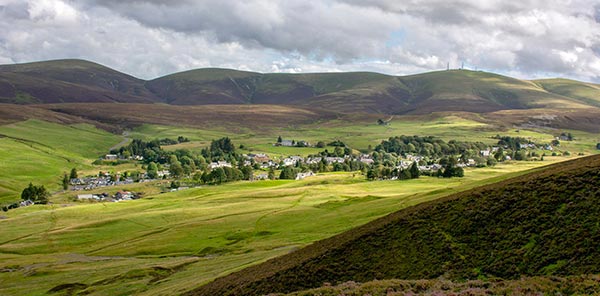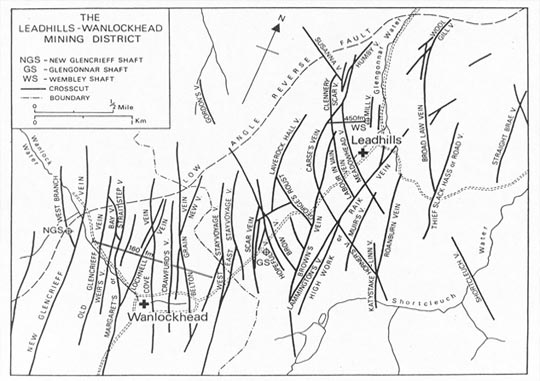Geology & The Mines
The lead ore (galena, lead sulphide, PbS) occurs in veins of which some 70 have been worked within the mining district. These intersect the rock of the district known as greywacke, a hard type of sandstone, deposited in the Ordovician Period, 460 million years ago, which is the host rock (the ‘country rock’ in mining terms) for the lead mineralization.
A vein is a linear fracture or fault in the rock which has opened out. When deep below the surface, hydrothermal (hot water) charged with minerals in solution (including lead) passed upwards and as it cooled, deposited minerals in crystalline form filling the fissure to form a vein. The veins vary in width along their lengths from a few centimetres to exceptionally 15 metres, though the average is about 1 metre. The veins consist not only of lead, but other minerals, not of economic value such as quartz, calcite and baryte known to miners as gangue minerals.
The alluvial gold is derived from bedrock sources. This includes quartz veins which are genetically distinct from the lead veins.
Although the veins are continuous across the property boundary between Leadhills and Wanlockhead, the deposit has from earliest times been exploited as two separate mining districts.
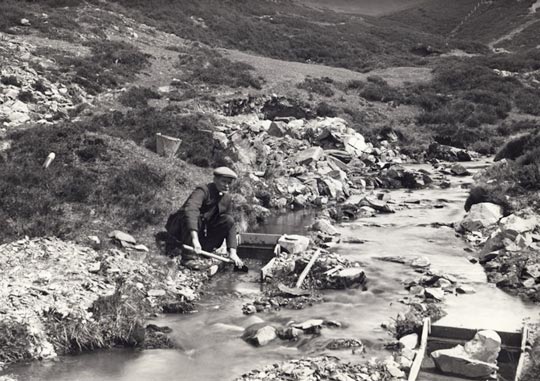
John Weir sluicing for gold in the Windgate Burn, August 1934.
(British Geological Survey P001629.)
The veins were worked by levels (horizontal tunnels driven along the vein at regular intervals, and by shafts (vertical from the surface) and underground shafts known as sumps or rises. The workable lead occurred as masses of ore known as ‘shoots’ separated by areas of barren ground with little or no lead ore. The areas where the ore is worked are known as ‘stopes’.
All the gold was won from the river alluvial gravel and unsuccessful trials on quartz veins was carried out in the 1890s.
Some of the lead miners worked the rivers and burns as a pastime and during unemployment.
Mineralogy
The primary minerals are those formed in the vein first, e.g. galena, calcite, quartz.
Secondary minerals are formed in the upper parts of the vein and are derived from oxidation of the original (primary) lead ore (galena) due to surface waters entering the vein.
Cerussite (white lead ore, lead carbonate, PbCO3) is the only secondary lead mineral to have been worked. In the 1820s, James Braid, surgeon to the mines recognised that cerussite formed from decomposition of galena.
By the middle of the 18th century the mines were becoming known for their contribution to the science of mineralogy. The discovery of several new mineral species in the Susanna Vein attracted the interest of the mineralogists of the time. Eventually named by the French mineralogist Beudant in 1832, these are:
Leadhillite – Pb4(SO4)(CO3)2(OH)2. Sulphate and carbonate of lead.
Lanarkite – Pb2(SO4)O. Basic lead sulphate.
Caledonite – Pb5Cu2(CO3)(SO4)3(OH)6. Basic sulphate of lead and copper.
The cavities which occurred in the veins provided space for crystals to grow which were of great interest to mineral collectors. Some miners, such as John Weir and John Blackwood, made their own collection of minerals. The finest specimens from the district can be seen in our national museum collections and a selection is displayed in the library.
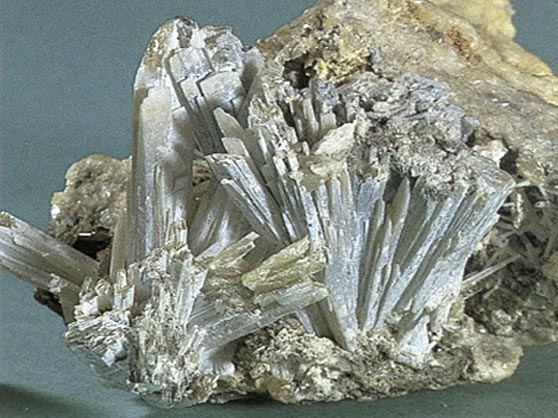
Lanarkite, National Museum of Scotland G.1991.31.35
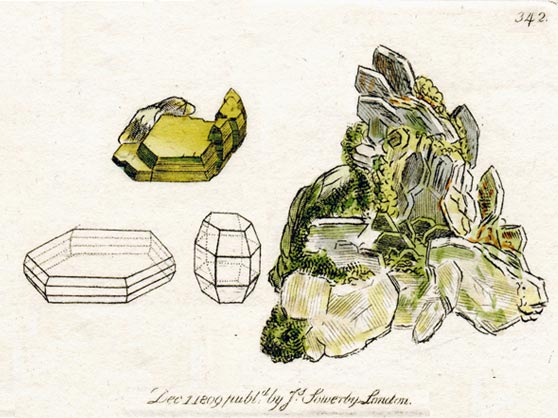
Leadhillite illustrated in Sowerby’s British Mineralogy, 1804-17.
Location
15 Main Street,
Leadhills,
South Lanarkshire
Scotland ML12 6XP
Opening Hours
Saturdays and Sundays
2pm to 5pm.
May to September.
Visits by appointment can be arranged throughout the year.
Leadhills Miners' Library is the World's first library for working people.
Alongside our collection of some 2500 books dating back to the 18th Century, the library contains many historical archives and photographs as well as a display of rare minerals connected to the local mining industry.
We also hold a 46 volume collection of mining journals and bargain books, recording contracts between the mine managers and miners from 1737-1854. It is the largest collection of its kind in Scotland and one of the largest in Britain.
Local Leadhills and Wanlockhead Links
Lead Mining Museum: https://www.leadminingmuseum.co.uk/
Leadhills Railway: https://www.leadhillsrailway.co.uk/
Ski Club: https://skiclub.lowtherhills.com/
Hopetoun Arms Hotel: https://www.hopetounarms.co.uk
